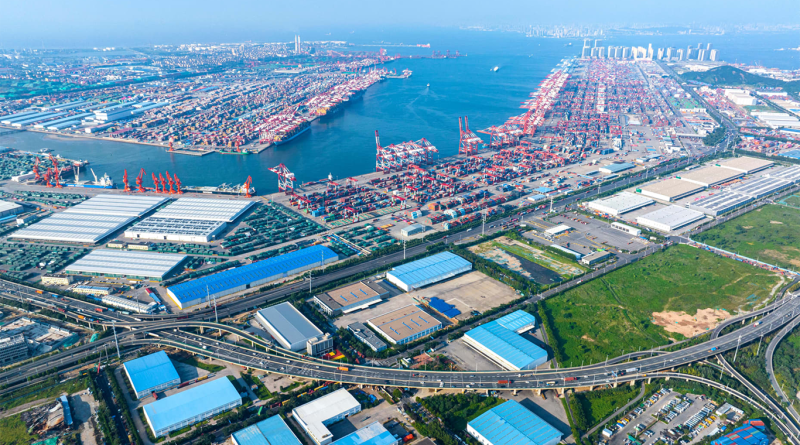China’s Manufacturing Bounces Back as Caixin PMI Surges in August
After months of declining performance, China’s manufacturing sector showed a modest rebound in August 2024, as indicated by the latest Caixin Manufacturing Purchasing Managers’ Index (PMI). The PMI reading rose to 50.4 from 49.8 in July, narrowly crossing into growth territory after a period of contraction. This shift highlights a significant turn for China’s industrial sector amid ongoing global economic uncertainties and domestic challenges.
China’s modest manufacturing recovery is driven primarily by an uptick in domestic demand and a slight improvement in export orders. However, the sustainability of this growth remains uncertain, with many economic experts debating the impact of China’s broader economic policies and the lingering effects of sluggish global demand.
Understanding the Caixin PMI and Its Impact
The Caixin Manufacturing Purchasing Managers’ Index (PMI) is a crucial indicator of China’s manufacturing health. Compiled from a survey of around 500 private and export-oriented manufacturers, the index provides insights into output, new orders, employment, and supply chain conditions. A PMI reading above 50 suggests expansion, while a reading below 50 indicates contraction.
In August 2024, the Caixin PMI registered a reading of 50.4, up from 49.8 in July. This slight increase above the 50 mark signals a return to growth, reflecting a modest rebound after previous months of contraction. The growth was mainly fueled by a resurgence in domestic demand, which offset weaker export conditions. New orders, a subcomponent of the PMI, grew slightly, reflecting a recovery in internal consumption and manufacturing activities.
This data contrasts with the broader official PMI, which focuses more on larger state-owned enterprises. The official PMI for August showed a reading of 49.1, indicating a contraction and reaching a six-month low. The divergence between the two indices underscores different dynamics between China’s private sector and state-backed enterprises, but both indices suggest a cautious optimism for the sector’s short-term future.
Drivers of Manufacturing Growth in China
Several factors have contributed to the modest growth in China’s manufacturing sector, with domestic demand playing a crucial role. Following months of weak industrial output, there has been a marked increase in local orders, driven by both consumer spending and inventory restocking by businesses. The government’s recent measures to stimulate the economy—such as reducing taxes, offering rebates, and easing monetary policies—have also started to show positive effects.
Additionally, there has been a slight uptick in new export orders, contributing to the overall growth. Although global demand remains weak, improved trade conditions with key partners such as Southeast Asia and Europe have provided some relief. The slight improvement in export orders is a positive sign, reflecting that China still holds a strong position in global supply chains, despite geopolitical tensions and trade disputes.
The combination of these factors has resulted in a more balanced growth pattern, with domestic consumption and export activities both contributing, albeit unevenly, to the overall recovery of the manufacturing sector.
Challenges Facing China’s Manufacturing Sector
Despite the positive PMI reading, significant challenges continue to cast a shadow over China’s manufacturing growth prospects. One of the most pressing issues is the weakness in external demand, which has been exacerbated by sluggish global economic conditions. Key export markets such as the United States and Europe are grappling with their own economic slowdowns, reducing demand for Chinese goods.
Geopolitical tensions, particularly trade disputes with the United States, continue to pose risks to China’s export-driven economy. Additionally, the global supply chain is still recovering from disruptions caused by the COVID-19 pandemic, the conflict in Ukraine, and fluctuating energy prices. These factors have led to increased costs for raw materials and transportation, further straining Chinese manufacturers.
Domestically, China faces its own economic hurdles. A property market slump, high debt levels, and concerns over consumer confidence could dampen the positive momentum seen in August. As a result, while the recent PMI reading is a positive sign, it may not necessarily signal a sustained upward trend.
In response to these challenges, the Chinese government has rolled out several policies aimed at stabilizing the economy and supporting the manufacturing sector. These include tax cuts for small and medium-sized enterprises (SMEs), increased infrastructure spending, and targeted financial support for key industries such as technology and green energy.
However, experts are divided on whether these measures will be sufficient to sustain growth. Some analysts argue that while the government’s policies provide short-term relief, deeper structural reforms are needed to address underlying issues such as excess capacity, corporate debt, and an over-reliance on exports. Others believe that the government’s strong fiscal and monetary toolkit gives it enough flexibility to manage these challenges effectively.
Looking ahead, the outlook for China’s manufacturing sector remains mixed. While domestic demand appears robust, the global economic environment continues to present significant headwinds. The sector’s performance will likely depend on a combination of internal policy effectiveness and external economic conditions, particularly the stabilization of global trade dynamics and energy prices.
Sources:
